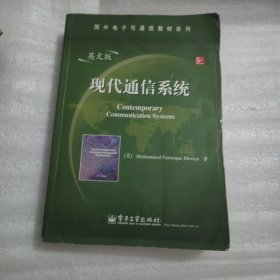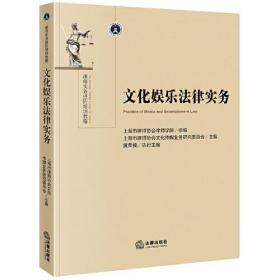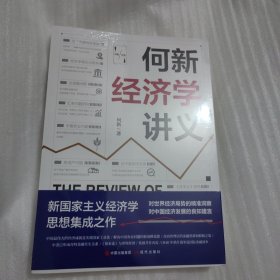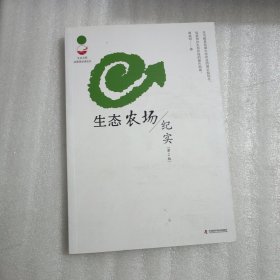
国外电子与通信教材系列:现代通信系统(英文版)
有划线字迹
¥ 25 2.5折 ¥ 99 八品
仅1件
作者[美]Mohammed Farooque Mesiya 著
出版社电子工业出版社
出版时间2013-12
版次1
装帧平装
货号a6
上书时间2024-05-08
- 在售商品 暂无
- 平均发货时间 12小时
- 好评率 暂无
- 最新上架
商品详情
- 品相描述:八品
图书标准信息
- 作者 [美]Mohammed Farooque Mesiya 著
- 出版社 电子工业出版社
- 出版时间 2013-12
- 版次 1
- ISBN 9787121218378
- 定价 99.00元
- 装帧 平装
- 开本 16开
- 纸张 胶版纸
- 页数 960页
- 字数 1747千字
- 正文语种 英语
- 丛书 国外电子与通信教材系列
- 【内容简介】
-
《国外电子与通信教材系列:现代通信系统(英文版)》是通信系统领域的经典教材,全面介绍了模拟通信系统和数字通信系统以及构成目前光纤、无线和卫星通信网基础设施的基本原理。书中列举了数字有线电视、无线通信、蜂窝通信和网络通信等众多应用实例,并结合这些实例详细分析了信源编码、信道编码、调制/解调、复用与同步技术、基带技术和抗噪技术。
- 【作者简介】
- Mohammed Farooque Mesiya,是伦斯勒理工学院工程与科学系教授,是几家成功创业公司的CEO。专业领域包括无线通信与网络、光纤通信与网络、数字通信与信号处理、宽带网络与结构等。Mesiya教授还出版过几本书籍,并发表了众多的期刊论文和会议论文。
- 【目录】
-
Preface xv
CHAPTER
Introduction
1.1 Elements of a Communication System
1.2 Communication Channels
1.2.1 Coaxial Cable
1.2.2 Optical Fibers
1.2.3 Radio Channels
1.3 Analog and Digital Communication Systems
1.3.1 Digital Communication Systems
1.3.2 Why Digital Transmission?
1.4 History of Communications
1.4.1 Wireless Communications
1.5 Key Themes and Drivers
Final Remarks
Further Readings
CHAPTER 2
Review of Signals and Linear Systems
2.1 Basic Signal Concepts
2.1.1 Some Useful Basic Signals
2.1.2 Energy and Power Signals
2.1.3 Logarithmic Power Calculations
2.1.4 Some Basic Operations on Signals
2.2 Basic System Concepts
2.2.1 Classification of Systems
2.2.2 Characterization of LTI Systems
2.3 Frequency Domain Representation
2.4 Fourier Series
2.4.1 Trigonometric Fourier Series
2.4.2 Parseval’s Theorem
2.4.3 Convergence of Fourier Series
2.5 Fourier Transform
2.5.1 Fourier Transforms of Some Common Signals
2.5.2 Properties of Fourier Transform
2.5.3 Fourier Transforms of Periodic Signals
2.6 Time-Bandwidth Product
2.7 Transmission of Signals Through LTI Systems
2.7.1 Distortionless Transmission
2.8 LTI Systems as Frequency Selective Filters
2.8.1 Ideal Filters
2.8.2 Realizable Approximations to Ideal Filters
2.8.3 Analog Filter Design Using MATLAB
2.9 Power Spectral Density
2.9.1 Time-Average Autocorrelation Function
2.9.2 Relationship Between Input and Output Power Spectral Densities
2.10 Frequency Response Characteristics of Transmission Media
2.10.1 Twisted Wire Pairs
2.10.2 Coaxial Cable
2.11 Fourier Transforms for Discrete-Time Signals
Final Remarks
Further Readings
Problems
MATLAB Problems
CHAPTER 3
Simulation of Communication Systems Using MATLAB/Simulink
3.1 Getting Started in Simulink
3.1.1 Solvers
3.2 Modeling in Simulink
3.2.1 Subsystems
3.3 Simulation of Signal and Noise Sources
3.3.1 Deterministic Signals
3.3.2 Random Signals
3.3.3 Modeling of AWGN Channel
3.4 Modeling of Communication Systems
3.4.1 Time-Domain Modeling
3.4.2 Transform-Domain Description
3.5 Displaying Signals in Frequency Domain
3.6 Using Simulink with MATLAB
3.6.1 Running Simulations from MATLAB
Final Remarks
Further Readings
CHAPTER 4
Amplitude Modulation
4.1 Low-Pass and Bandpass Signals
4.2 Double-Sideband Suppressed-Carrier AM
4.2.1 Spectrum of the DSB-SC AM Signal
4.2.2 Demodulation of DSB-SC AM Signals
Experiment 4.1 DSB-SC AM Modulation and Demodulation
4.3 Conventional Amplitude Modulation
4.3.1 Spectrum of the Conventional AM Signal
4.3.2 Demodulation of Conventional AM Signal
Experiment 4.2 Conventional AM Modulation and Demodulation
4.4 Alternative Representations for BP Signals and Systems
4.4.1 Frequency Spectrum of Complex Envelope and Analytic Representations
4.4.2 Complex Envelope Representation of BP Systems
4.5 Single-Sideband AM
4.5.1 Demodulation of SSB-AM Signals
Experiment 4.3 SSB-AM Modulation and Demodulation
4.6 Vestigial-Sideband AM
4.7 Quadrature Multiplexing
4.8 Multiplexing
4.8.1 Frequency Division Multiplexing
4.9 Frequency Translation and Selection
4.9.1 Down-Conversion Mixer
4.9.2 Image-Reject Mixers
4.10 Communication Receivers
4.10.1 Superheterodyne Receivers
4.10.2 Direct-Conversion Receivers
4.10.3 Low-IF Receiver Architectures
Final Remarks
Further Readings
Problems
MATLAB Problems
APPENDIX 4A: Hilbert Transform
CHAPTER 5
Angle Modulation
5.1 FM and PM Signals
5.1.1 FM and PM Signals with Sinusoidal Modulating Signal
5.1.2 Power in Angle-Modulated Signal
5.2 Spectrum of Angle-Modulated Signals
5.2.1 Bandwidth of a Sinusoidally Modulated FM Signal
5.2.2 Bandwidth of an FM Signal Modulated by Arbitrary Message Signal
5.3 Narrowband FM
5.4 Demodulation of Angle-Modulated Signals
5.4.1 Bandpass Limiter
5.4.2 Frequency Discriminator
Experiment 5.1 Simulink Model of an FM System with Frequency Discriminator
Experiment 5.2 FM Demodulation with Balanced Slope Detector
5.4.3 Phase-shift Discriminator: Quadrature Detector
5.5 Phase-Locked Loop
5.5.1 Analog Phase-Locked Loop
5.5.2 APLL Linear Model
— 没有更多了 —




















以下为对购买帮助不大的评价